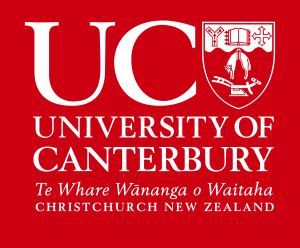Institute
Engineering Geology (Adele Amos) & Disaster, Risk and Resilience (Nandhini R)
Time & Place
Thu, 07 Apr 2022 16:00:00 NZST in ER 263 and Zoom
Abstract
https://canterbury.zoom.us/j/4408336887
Biography
Fiber Optic Network vulnerability to geohazards in Mackenzie Basin and Waitaki valley
Adele Amos (MSc in Engineering Geology)
Supervisors: Clark Fenton (SEE), Tom Logan (Civil and Natural Resources Engineering), Jim Walker (Meridian Energy)
The Waitaki Hydro Power Scheme dominates the landscape in the Mackenzie Basin and the Waitaki valley. Meridian Energy own and operate six power stations and the dams, canals and outlet structures that allow them to function. The scheme is fully automated and controlled remotely via the use of a fibre optic network.
There is little known about the vulnerability of this cable network, despite it being a critical piece of infrastructure. This research focuses on assessing the vulnerability of the cable network. A desk study and field reconnaissance were undertaken for the construction of a ground model. Ground model information is currently being used to construct hazard exposure maps in GIS software. Tensile testing of the fibre optic cable is being performed to provide cable fragility information. A risk assessment is planned to utilise this information.
The research is indicating that the cable network is exposed to several geohazards including local fault systems, flooding and erosion from drainage networks, and debris flows. The intention is that this research will provide Meridian Energy as the owner with useful information for future development and improvements of the schemes resilience.
Assessment of potential suitability of land for town growth – Franz Josef
Nandhini R (MSc in Disaster, Risk and Resilience)
Supervisors: Tim Davies (SEE), Tom Wilson (SEE), Matthew Hughes (Civil and Natural Resources Engineering)
The township of Franz Josef Glacier in Westland was, before the onset of the Covid-19 pandemic (and presumably will again become), a rapidly growing tourism centre and a key location for the wider tourism business of New Zealand. With a permanent population of about 500, the township can accommodate about 2000 visitors overnight and total visitor night numbers in recent years have approached 600,000; the annual contribution of Franz Josef to NZ GDP has been in the order of $23 million. This locality is subject to a range of natural hazard events, including earthquakes, flooding, landslides, landslide-dambreak floods and debris flows. As a result of several decades of investigations and reporting, a discussion document recently suggested that relocation of the township to a less-threatened location should be considered as a risk-management option. The aim of the project is to carry out a relative risk analysis by comparing the natural hazard risk profiles of the present Franz Josef township and the proposed relocation area to the north-west of the present site. The risk profiles will be compared by assuming that assets, exposures, and vulnerabilities will be identical at both sites; the hazard distributions will then represent the relative risk profiles of the sites. Specific areas requiring further investigation will be highlighted.
